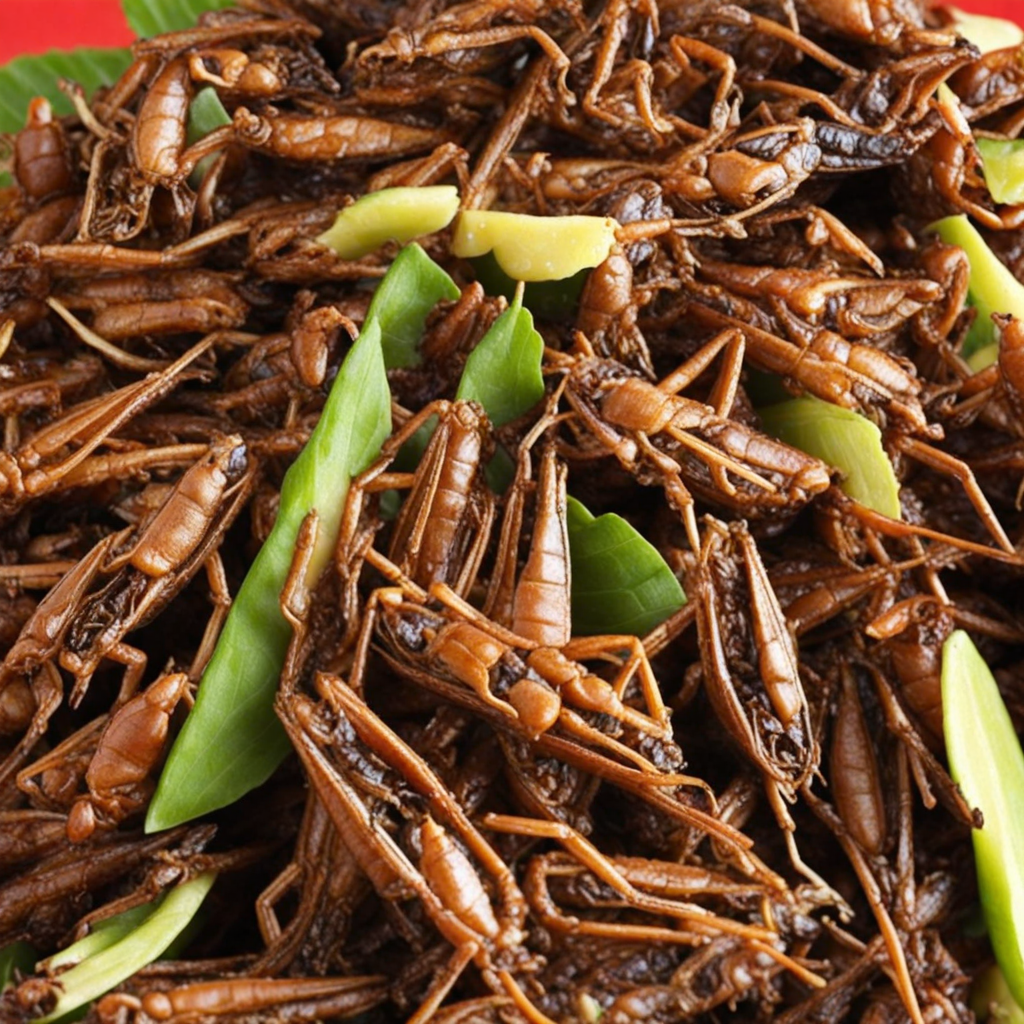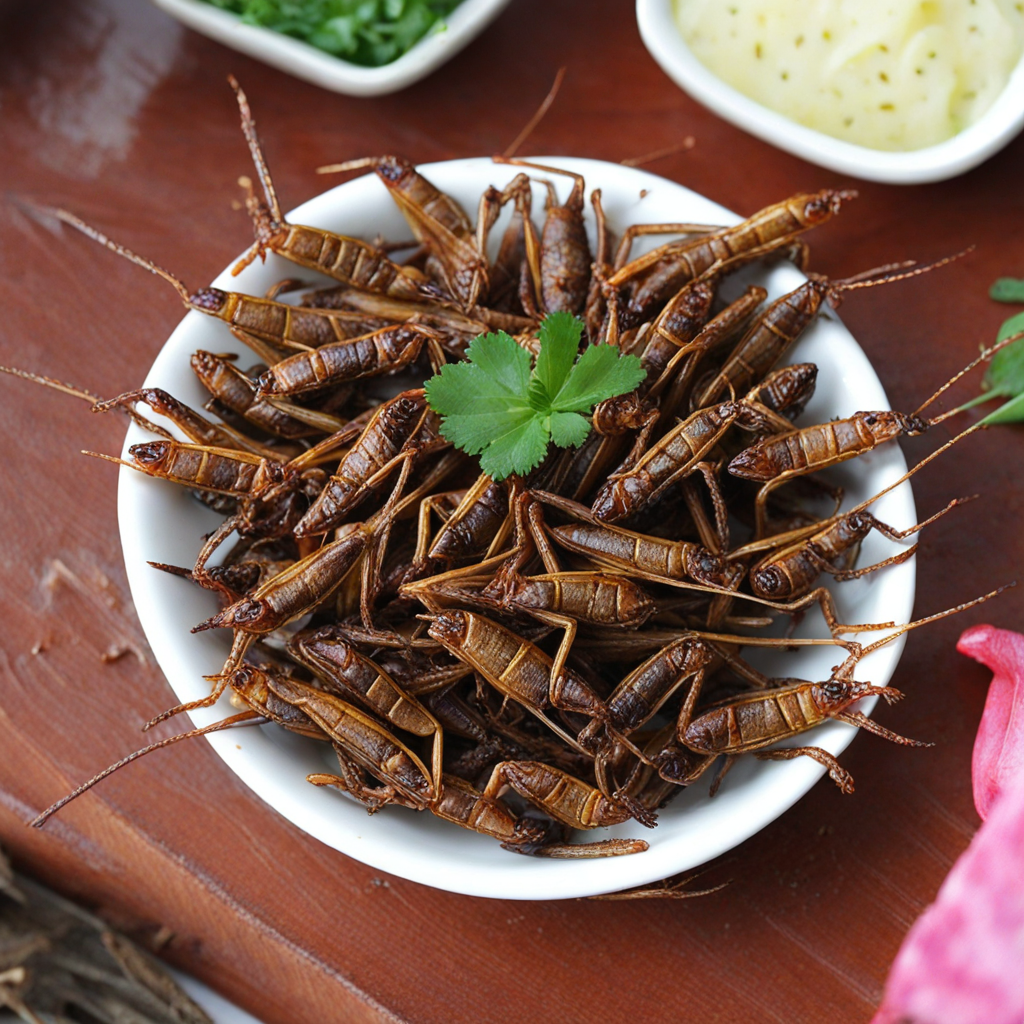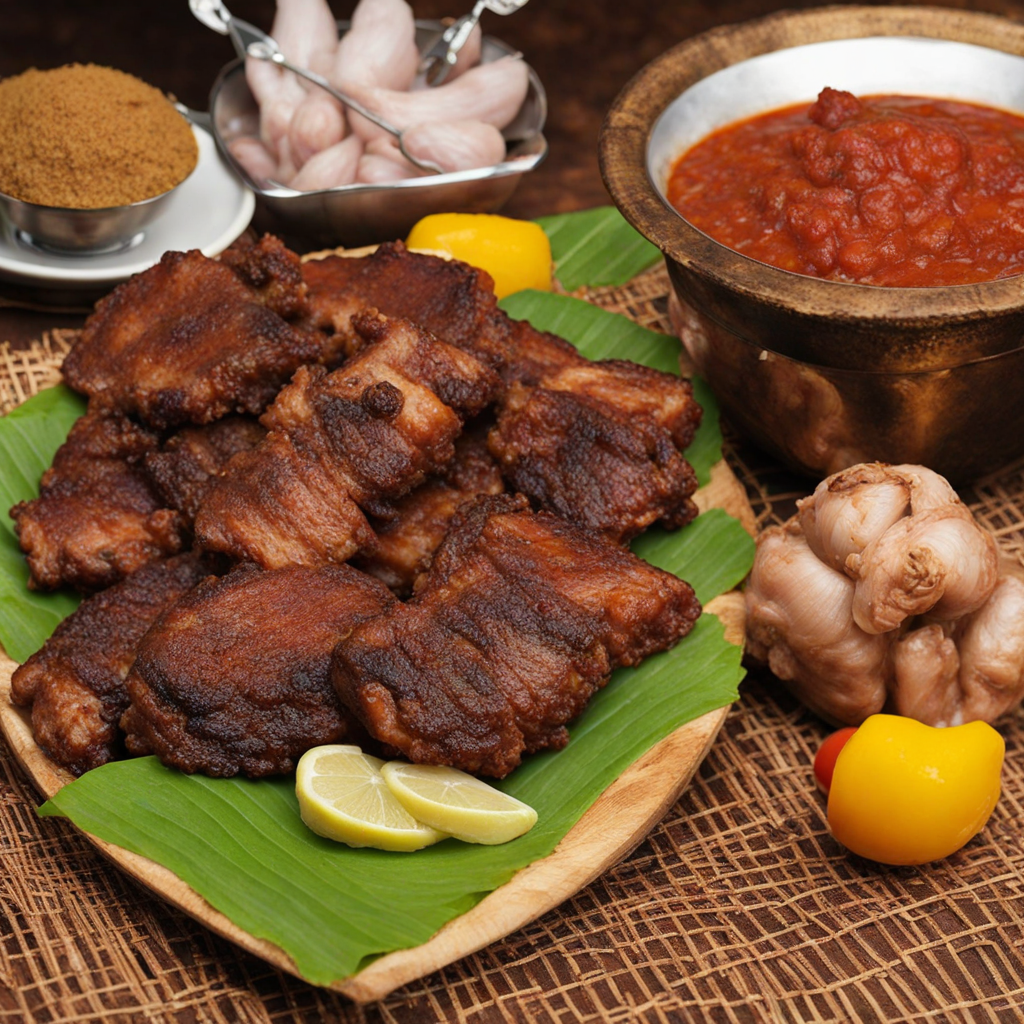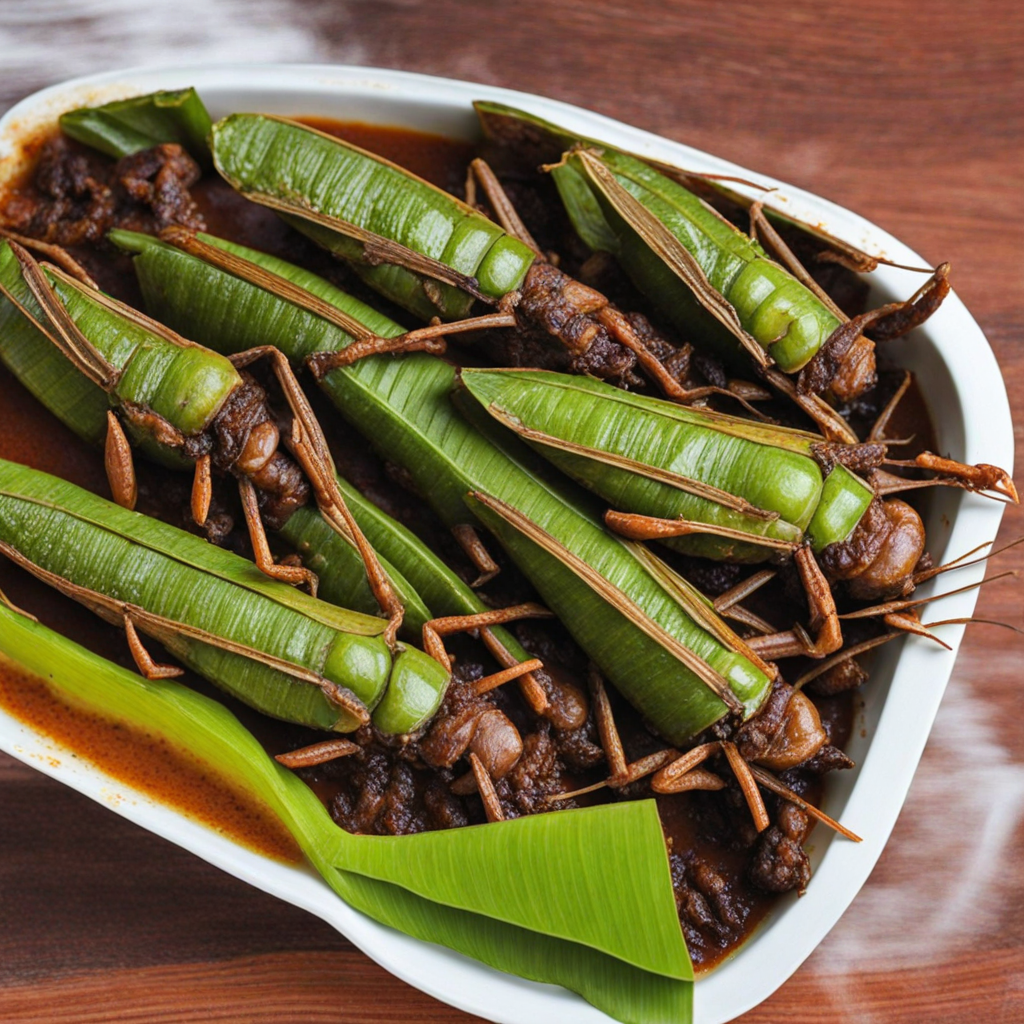Nsenene
Nsenene, also known as edible grasshoppers, is a beloved delicacy in Uganda, celebrated for its unique flavor and nutritional value. These small, crunchy insects are typically harvested during the rainy season when they swarm in abundance. The locals have perfected the art of preparing Nsenene, often frying them until they reach a golden-brown hue, which enhances their natural nuttiness. The texture is reminiscent of crispy popcorn, providing a satisfying crunch with every bite, making it an irresistible snack or addition to various dishes. When enjoying Nsenene, you'll find that it carries a distinct earthy flavor with hints of umami, making it a versatile ingredient. It can be seasoned simply with salt or combined with spices like garlic and chili for an extra kick. Some recipes incorporate Nsenene into stews, salads, or even as a topping for traditional Ugandan dishes. The taste experience is both intriguing and delightful, introducing a new dimension to the palate that is often unexpected but thoroughly enjoyable. One of the most appealing aspects of Nsenene is its nutritional profile, packed with protein, vitamins, and minerals, making it a sustainable food source. It embodies the essence of Ugandan cuisine, where local ingredients and traditional practices come together. For those adventurous enough to try this delicacy, Nsenene offers not just a taste of Uganda but also a connection to the culture and culinary heritage that thrives in this vibrant nation.
How It Became This Dish
The Fascinating History of Nsenene: Uganda’s Edible Grasshoppers Origin and Early History Nsenene, scientifically known as *Ruspolia differens*, is a species of grasshopper that has become an iconic delicacy in Uganda. The name "nsenene" itself is derived from the Luganda language, spoken by the Baganda people of central Uganda. This food source has deep roots in the cultural and culinary practices of various Ugandan communities, particularly in the Buganda region, where it is more widely consumed. Historically, the consumption of nsenene can be traced back to pre-colonial times, where local communities relied on these insects as a significant source of protein. The harvesting of nsenene typically occurs during the rainy seasons, particularly from October to December and again in March, when the insects are most abundant. The practice of collecting nsenene is often a communal activity, involving entire families or groups, which reinforces social bonds and cultural identity. Cultural Significance In Ugandan culture, nsenene holds more than just nutritional value; it is laden with cultural significance. Harvesting and consuming nsenene is more than a mere culinary practice; it is a tradition that unites families and communities. During the harvesting season, the excitement is palpable as people gather together in the evenings, armed with torches and nets, to catch the grasshoppers as they emerge from their hiding spots. This communal activity is often accompanied by laughter, storytelling, and singing, thus fostering a strong sense of community. Nsenene is not only a staple food but also a symbol of abundance and nature's bounty. Its season is celebrated with local festivals and gatherings where people come together to share meals featuring nsenene. Additionally, this delicacy is often featured in special occasions and events, such as weddings and communal feasts, highlighting its importance in social rituals. Culinary Usage The culinary versatility of nsenene is one of the reasons for its enduring popularity. Traditionally, nsenene is prepared through a simple process of cleaning, frying, and seasoning. The grasshoppers are typically fried until they are crispy, often with a sprinkle of salt, and can be served as a snack or added to various dishes. They are rich in protein and have a nutty flavor, which makes them an appealing addition to many meals. In modern Ugandan cuisine, nsenene is often incorporated into stews, salads, and even served alongside staple foods like posho (maize porridge) or matoke (steamed plantains). The unique taste of nsenene, coupled with its nutritional value, has made it a favorite not only among locals but also among tourists seeking to experience authentic Ugandan flavors. Development Over Time The trajectory of nsenene as a food source has evolved significantly over the years. While it was once solely a local delicacy consumed by specific communities, globalization and increased tourism have introduced nsenene to a broader audience. As Uganda’s culinary landscape gains international recognition, nsenene has begun to appear on restaurant menus, not only in Uganda but also in various parts of the world. The introduction of nsenene to the international palate has also sparked interest in entomophagy (the practice of eating insects) as a sustainable source of protein. With growing concerns about food security and environmental sustainability, insects like nsenene are being recognized for their low environmental impact compared to traditional livestock farming. Nsenene, being rich in protein, vitamins, and minerals, is increasingly seen as a viable alternative to conventional meat sources. Moreover, the rise of social media and food blogs has played a significant role in promoting nsenene beyond Uganda’s borders. Influencers and food enthusiasts sharing their experiences with nsenene have captivated many, leading to a growing curiosity about this unique delicacy. As a result, nsenene is gradually being embraced by gourmet chefs who are experimenting with innovative recipes that combine traditional flavors with modern culinary techniques. Challenges and Future Prospects Despite its rich history and cultural significance, the future of nsenene faces several challenges. The impact of climate change, urbanization, and habitat destruction poses significant threats to grasshopper populations. As weather patterns become increasingly unpredictable, the seasonal availability of nsenene may be jeopardized, affecting both the livelihoods of those who rely on harvesting them and the cultural practices associated with their consumption. Additionally, the commercialization of nsenene harvesting has raised concerns about sustainability and overexploitation. As demand grows, it is crucial to implement sustainable harvesting practices to ensure that this traditional food source remains available for future generations. There is also a need for greater awareness and education about the nutritional benefits of nsenene, both locally and globally. By promoting nsenene as a sustainable food source, there is potential for increased investment in its harvesting and processing, which could provide economic opportunities for rural communities. Conclusion Nsenene is more than just a food item; it is a rich part of Uganda’s cultural heritage and identity. From its historical roots in local communities to its emerging presence on the global culinary stage, nsenene embodies the intersection of culture, tradition, and sustainability. As Uganda continues to navigate the complexities of modernity and globalization, the story of nsenene serves as a reminder of the importance of preserving traditional food practices while embracing the possibilities of the future. In celebrating nsenene, we not only honor the culinary traditions of Uganda but also recognize the potential for insects to play a vital role in sustainable food systems. As we enjoy the crispy, flavorful bites of nsenene, we partake in a culinary journey that spans generations, cultures, and the ever-changing landscape of our world.
You may like
Discover local flavors from Uganda







